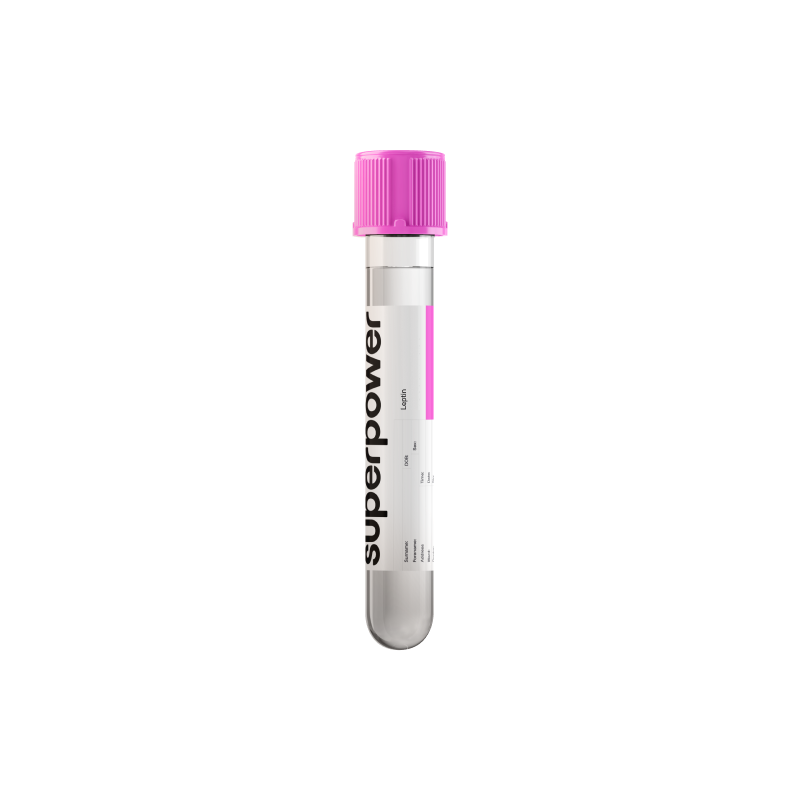Key Benefits
- Measure a fat-cell hormone that indicates insulin sensitivity and cardiometabolic health.
- Spot early insulin resistance; low levels predate changes in glucose or A1c.
- Refine cardiovascular risk; low adiponectin links to atherosclerosis and metabolic syndrome.
- Flag fatty liver risk; low levels associate with NAFLD and worse liver fat.
- Clarify PCOS-related insulin issues; lower adiponectin is common despite normal BMI.
- Support pregnancy planning; low levels signal higher gestational diabetes risk.
- Track response to lifestyle or insulin-sensitizing medications; levels rise with weight loss and exercise.
- Best interpreted with fasting insulin, glucose/A1c, lipids, waist size, and liver enzymes.
What is Adiponectin?
Adiponectin is a protein hormone made and released by body fat (adipose tissue) into the bloodstream. It comes mainly from fat cells (adipocytes) and is one of the key fat-derived messengers (adipokines). After release, it travels to other organs and binds to its receptors (AdipoR1 and AdipoR2) on muscle, liver, and blood vessel lining.
Its job is to coordinate how the body uses fuel. Adiponectin helps tissues respond to insulin more effectively (insulin sensitivity), encourages muscles to burn fats for energy (fatty acid oxidation), and signals the liver to make less glucose (suppresses gluconeogenesis). Inside cells it activates energy-sensing programs (AMPK and PPAR-α) that promote efficient metabolism. In blood vessels it has a calming, protective effect (anti-inflammatory, anti-atherogenic), helping the endothelium function well. As a messenger from fat stores to metabolic organs, adiponectin reflects how well fat tissue is communicating with the rest of the body and supports overall metabolic balance.
Why is Adiponectin important?
Adiponectin is a hormone made by fat cells that signals to the liver, muscle, pancreas, and blood vessels to burn fat efficiently, keep blood sugar in check, calm inflammation, and protect arteries. It boosts insulin sensitivity and supports mitochondrial energy use, acting like a metabolic “brake” on sugar and fat overload. Most labs report sex-specific ranges; women typically run higher than men. For metabolic health, values toward the higher end of the normal range are generally associated with benefit.
When adiponectin is low, it usually reflects excess visceral fat and suppressed AMPK signaling, leading to reduced fatty-acid oxidation, more liver fat, and insulin resistance. The effects show up as features of metabolic syndrome—rising glucose and insulin, higher triglycerides with lower HDL, increasing waist size, and higher blood pressure—and can contribute to nonalcoholic fatty liver disease. In women, low levels are linked to polycystic ovary syndrome. During pregnancy, lower adiponectin is associated with gestational diabetes risk. In children and teens, levels often drop through puberty alongside transient insulin resistance.
High adiponectin within the reference range tends to track with leanness, better insulin sensitivity, and vascular protection. Markedly elevated levels, however, can signal catabolic or inflammatory states such as heart failure, chronic kidney disease, hyperthyroidism, or frailty in older adults—the “adiponectin paradox.”
Big picture, adiponectin connects fat tissue quality to liver fat handling, muscle metabolism, endothelial health, and systemic inflammation. Interpreting it alongside insulin, glucose, triglycerides, HDL, liver enzymes, CRP, and waist measures helps forecast long-term risks for type 2 diabetes, fatty liver, and atherosclerotic disease.
What Insights Will I Get?
Adiponectin is a fat‑cell hormone that boosts insulin sensitivity, increases fat burning, and quiets inflammation. Via AMPK and PPAR‑α it improves glucose use, reduces liver fat, and protects blood vessels. Because it links adipose, muscle, liver, and endothelium, it tracks overall cardiometabolic, reproductive, and immune health.
Low values usually reflect diminished insulin‑sensitizing signals (hypoadiponectinemia), typically with visceral adiposity and insulin resistance. This means less AMPK activation, poorer fat oxidation, higher triglycerides, and endothelial dysfunction. System effects include metabolic syndrome features, fatty liver, and greater type 2 diabetes and cardiovascular risk. Levels run lower in men, and during pregnancy; low is common in PCOS.
Being in range suggests balanced adipose–liver–muscle crosstalk, steady glucose handling, healthier lipids, and anti‑inflammatory vascular tone. In healthy adults, optimal often sits mid‑to‑upper normal.
High values usually reflect stronger insulin‑sensitizing, anti‑inflammatory signaling, more typical in lean states and in women. Very high levels can appear with catabolism or chronic disease—older age, advanced heart failure, chronic kidney disease, chronic lung disease, or type 1 diabetes—marking weight loss or frailty (the adiponectin paradox) rather than protection. In pregnancy, adiponectin declines.
Notes: Assays differ; some report total, others high‑molecular‑weight (HMW) adiponectin, which best tracks insulin sensitivity. Reference ranges vary by sex and age. Insulin‑sensitizing drugs can raise levels; renal impairment can elevate them. Fasting has minimal effect.



.svg)



.png)
.png)
.png)
.png)








